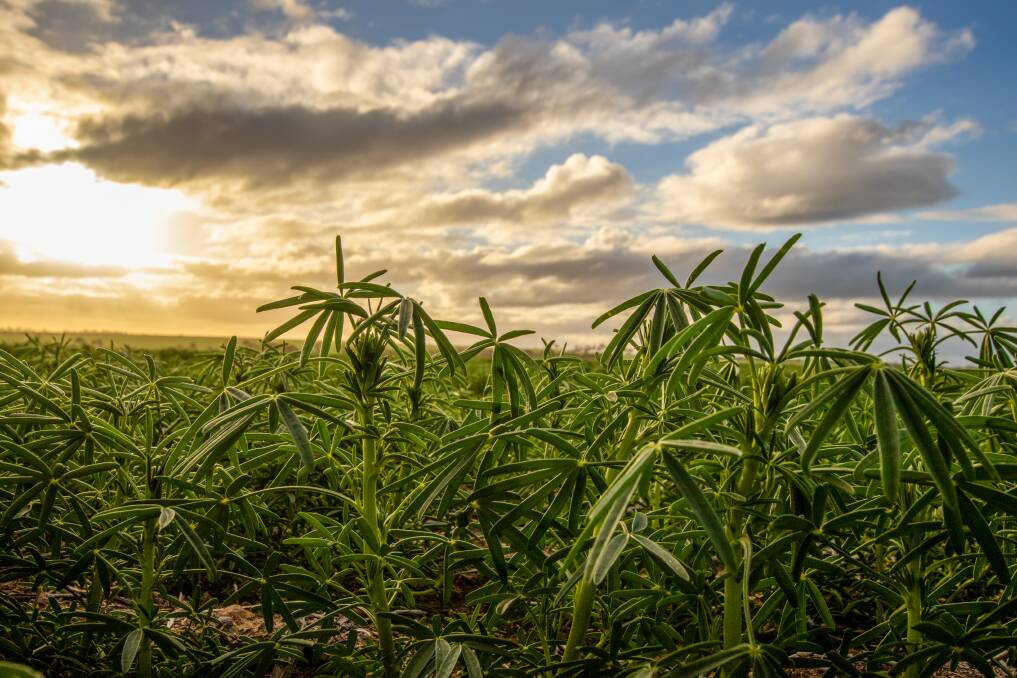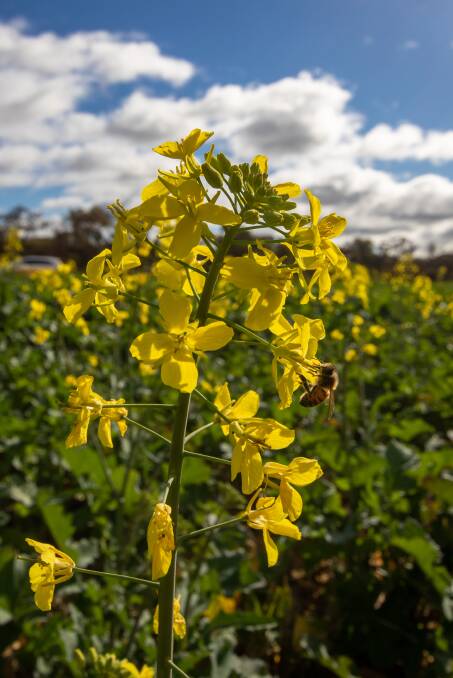
WITH the very large total area sown this year and good growing conditions right across the State, it is hard to see how Western Australia will not be in for a record total tonnage, with the Grain Industry Association of WA (GIWA) last week conservatively predicting 19.63 million tonnes.
Subscribe now for unlimited access to all our agricultural news
across the nation
or signup to continue reading
Recent rainfall has consolidated the excellent start to the grain growing season and all regions have received top-up rain which has continued to drive tonnage estimates up.
The wet areas in the South West and southern coastal areas are now becoming too wet and tonnage estimates are down at least 10 to 15 per cent in the southern areas of the Albany Port zone and the coastal strip in the Esperance port zone.
However, the solid crops across the rest of the State will make up this difference to neutralise the impact on total grain production for WA.
GIWA crop report author Michael Lamond said total winter rainfall to date had only been equal to, or slightly less than the median for the past 45 years for most of the grain growing regions.
"The reasons behind the positive outlook are more to do with the early start, the level of subsoil moisture from autumn rains, the very good growing conditions, and the large area of crop - a combination of factors that do not come together often," Mr Lamond said.
"Current tonnage estimates for the State are conservative as crops still have to make it through the inevitable frost that can shave off significant tonnage in the spring.
"Most regions will still require a reasonable spring with close to average rainfall and average temperatures to minimise the impact of heat shock on final grain yields."
All crops in the Geraldton port zone are further advanced for this time of the year than they have been for a while.
Subsoil moisture reserves are not as good as areas further south, however the early planting and fast growth to date means there is less risk of significant yield penalty from heat shock if the season cuts out early.
"The region will still need a reasonable spring to get crops over the line and to hit the tonnages estimated," Mr Lamond said.
"If there is an average finish to the season, there is upside potential for all crops, however frost is still a risk in the region and top end potential yield may be limited by the restricted availability of nitrogen fertiliser for some growers."
Growing conditions in Kwinana North Midlands are good in the west to very good in the east - the crops are clean from weeds and disease with a lot of growth for this time of the year.
The early start has resulted in crops at a wide range of growth stages which will help to mitigate the loss of large tonnages from frost and heat stress in the spring.
However, rain is still the most limiting factor for the region as most areas need it to keep raining to achieve the above-average grain yield potential that is there at present.
The whole Kwinana South region is in very good shape for above-average grain yields if rainfall for the next two months is close to average.
Even the dry area in the central part of the zone along the Great Eastern Highway has recently received some good falls following a very dry June.
"The western areas are starting to become too wet to get on to spray and fertilise, although the grain yield potential has not been impacted yet as it has been further south," Mr Lamond said.
"There is a very wide range of crop growth stages which will help to reduce the impact from threats such as frost and heat in the spring.
"The very early sown canola and barley looks sensational and the later sown crops have picked up in the last few weeks due to the very mild growing conditions."
The drier areas of the Kwinana North East zone are having a very good year.
Adequate levels of subsoil moisture from autumn rains and crops sown into moisture from early rains has the region looking forward to one of the best years for a while.

The Albany West zone is very wet and with more rain over the past few days, significant loss of crop is expected from waterlogging.
Areas around Kojonup and Kendenup have had near record rainfall to date and much of the lower lying areas of paddocks have lost crop.
"There are some huge differences in crop grain yield potential with some of the well-drained higher country that went in early 'the best ever' and the later sown low country very poor," Mr Lamond said.
"The tail end of most crop programs were abandoned with only a paddock or two to go, which reduced the intended crop area slightly.
"Now with the crop loss and reduced paddock averages from waterlogging, the total tonnage estimated from the region will be closer to average."
Some areas of the Albany South region were hit hard by severe storms which caused significant damage to individual paddocks in the worst hit areas.
However, the greater impact is waterlogging across the whole region which has resulted in areas of crop death and areas that will require reseeding when it dries out enough to get back on paddocks.
The net result for the region is likely to be below average total tonnage for all crops.
Soil moisture reserves in Albany East (Lakes Region) from autumn are greater than normal and winter rainfall is about average to date.
While some crops required reseeding due to big dumps of rain, the affected area is small and most crops have very good establishment, setting them up for above average grain yield potential.
"There is a big spread in crop maturity even though the whole zone received early rains conducive to planting," Mr Lamond said.
"This was a planned move by many growers and represents a major practice change for the region since 2016 where frost took a massive toll on crop yields.
"More oats and barley are now planted in the low areas and the spread in planting dates mean the risk of crop loss is less."
Crops across the Esperance zone are in excellent condition, with the only downside being that some of the wetter areas close to the coast are starting to show signs of waterlogging.
However, crop development is above average and well advanced for this time of the year and there is a noticeable range in crop development particularly in the frost-prone parts of the landscape.
Overall, the large areas of wheat in the low rainfall regions of the Geraldton, Kwinana and Esperance port zones are in better shape this year than they have been since 2016, which was a record tonnage year.
"The 10.6mt of wheat that was produced in 2016 was from just under 4.5m hectares of area sown, however there is 14pc more wheat area this year than in 2016 and the increase will have a big impact on the final total grain production," Mr Lamond said.
"Barley and canola area estimates have come back slightly from last month due to lost areas to waterlogging and while these wet areas are now likely to obtain only average grain yields, the yield potential for barley and canola is still very good for the remainder of the State."
The lupin area is down due to the strong canola prices at planting time, as is the total oat area due to the reduction in area sown for hay.
However the tonnage outlook for oat grain is well up on recent years due to very good growing conditions in areas where oats are grown.
That includes more area planted in the medium to low rainfall regions where there were early planting opportunities, reasonable prices, and the swing out of hay to grain for the dedicated hay growers.


